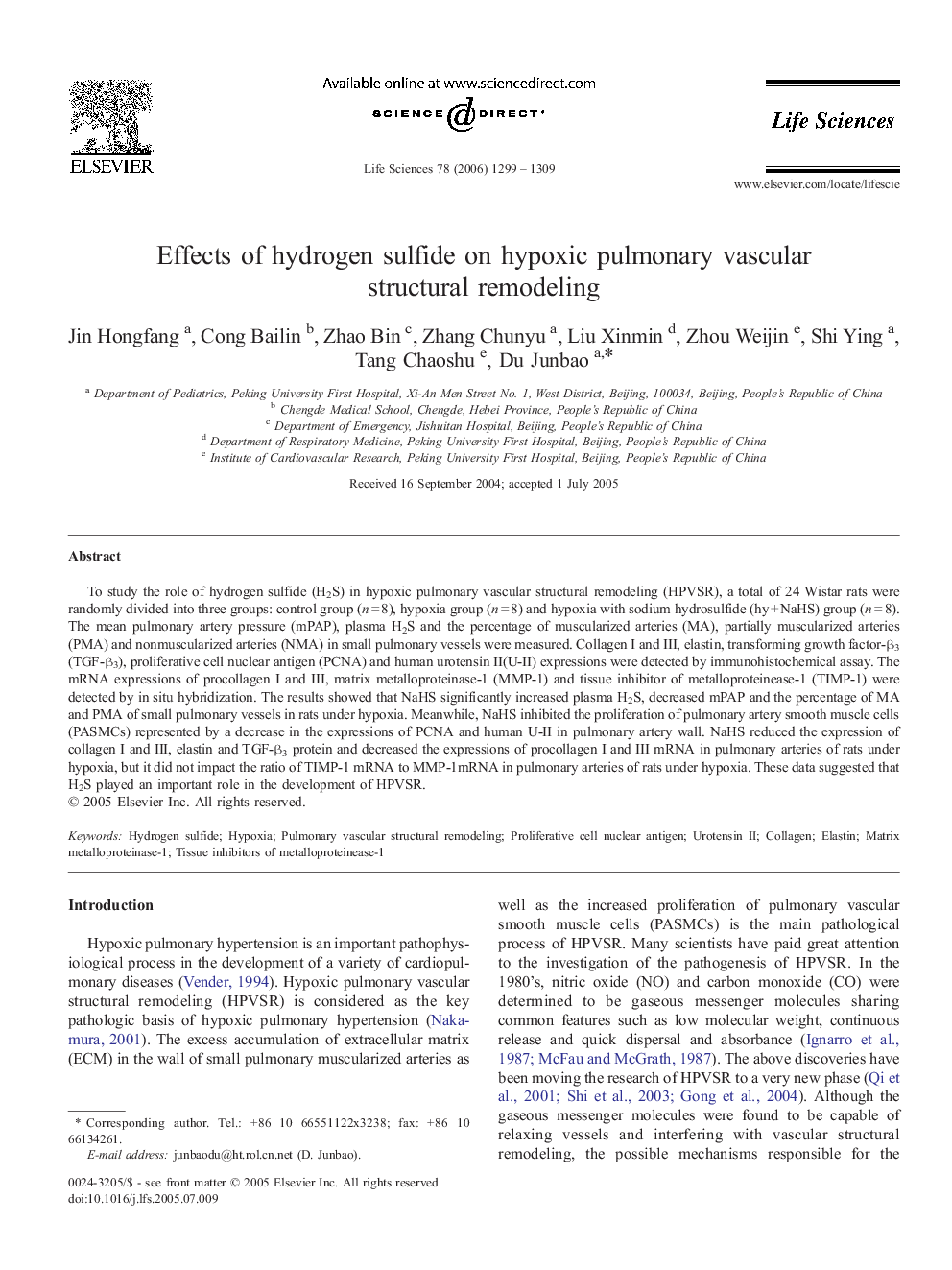| Article ID | Journal | Published Year | Pages | File Type |
|---|---|---|---|---|
| 2554377 | Life Sciences | 2006 | 11 Pages |
To study the role of hydrogen sulfide (H2S) in hypoxic pulmonary vascular structural remodeling (HPVSR), a total of 24 Wistar rats were randomly divided into three groups: control group (n = 8), hypoxia group (n = 8) and hypoxia with sodium hydrosulfide (hy + NaHS) group (n = 8). The mean pulmonary artery pressure (mPAP), plasma H2S and the percentage of muscularized arteries (MA), partially muscularized arteries (PMA) and nonmuscularized arteries (NMA) in small pulmonary vessels were measured. Collagen I and III, elastin, transforming growth factor-β3 (TGF-β3), proliferative cell nuclear antigen (PCNA) and human urotensin II(U-II) expressions were detected by immunohistochemical assay. The mRNA expressions of procollagen I and III, matrix metalloproteinase-1 (MMP-1) and tissue inhibitor of metalloproteinease-1 (TIMP-1) were detected by in situ hybridization. The results showed that NaHS significantly increased plasma H2S, decreased mPAP and the percentage of MA and PMA of small pulmonary vessels in rats under hypoxia. Meanwhile, NaHS inhibited the proliferation of pulmonary artery smooth muscle cells (PASMCs) represented by a decrease in the expressions of PCNA and human U-II in pulmonary artery wall. NaHS reduced the expression of collagen I and III, elastin and TGF-β3 protein and decreased the expressions of procollagen I and III mRNA in pulmonary arteries of rats under hypoxia, but it did not impact the ratio of TIMP-1 mRNA to MMP-1mRNA in pulmonary arteries of rats under hypoxia. These data suggested that H2S played an important role in the development of HPVSR.
